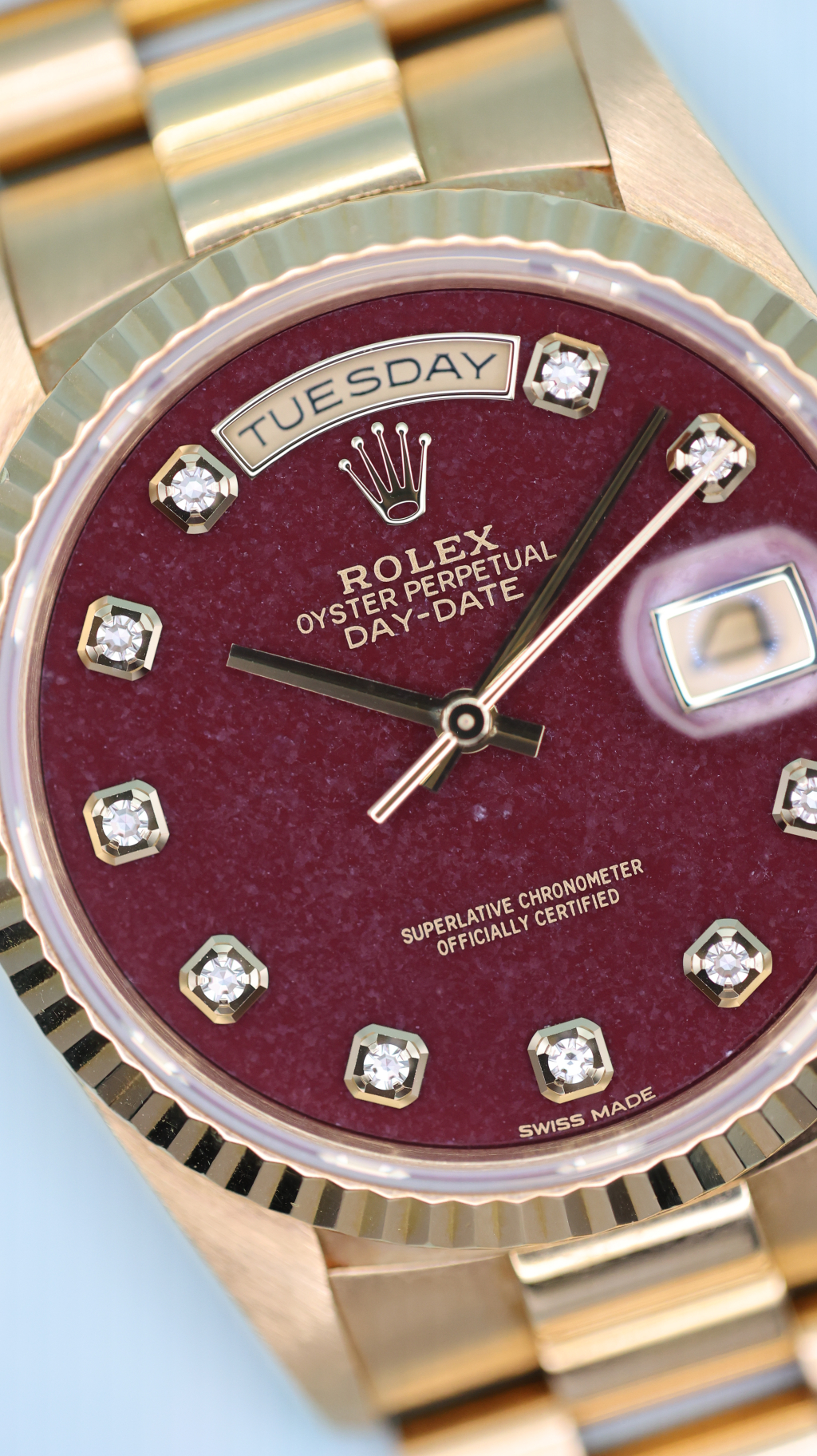The President’s Watch – The iconic Rolex Day-Date in focus
|
Rolex introduced the Day-Date in 1956 with the reference 6510 and 6511, making it the first wristwatch to display both the date and the day of the week spelled out in full. While the date function was not entirely new to Rolex, the inclusion of the day display on the dial was a groundbreaking innovation. Crafted exclusively in precious metals like yellow gold, white gold, rose gold, and platinum, the Day-Date exuded elegance and refinement from the very beginning. From Early Models to Iconic References Merely a year later, the initial references were succeeded by the new Day-Date models: the ref. 6611 with a fluted bezel, the ref. 6612 with a smooth bezel, and the ref. 6613 featuring a dazzling diamond-set bezel. Following that, Rolex introduced 5-digit references, which were subsequently followed by 6-digit references. Over the years, the Rolex Day-Date has evolved into a symbol of prestige, adorning the wrists of numerous influential personalities in politics or sports. Among the notable figures who have proudly worn this iconic watch are personalities like Dalai Lama, Jack Nicklaus, or Lyndon B. Johnson, who notably became the first US President to wear the Day-Date in the Oval Office. However, it wasn't just limited to them; many other influential personalities also embraced the Day-Date. The Rolex Day-Date still remains a symbol of success and is worn by famous leaders, celebrities, and visionaries from different backgrounds. That's why it's often called the "Presidents' Watch" because it's associated with influential people in politics. |
Why Vintage Datejust Watches Are the Ideal Choice to Begin Your Rolex CollectionPublished on 24.09.2023
|



